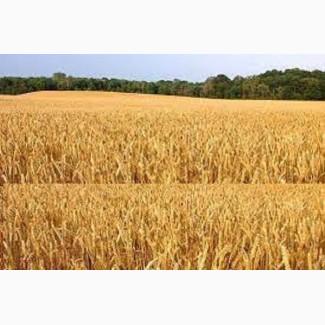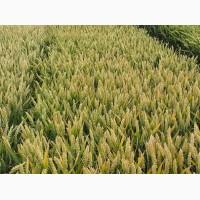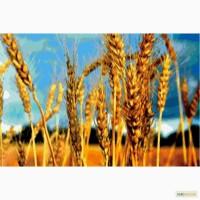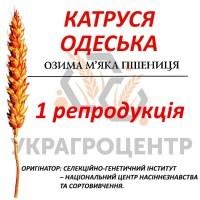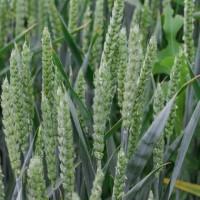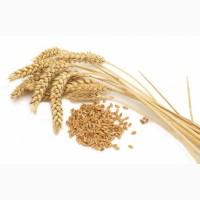For sale / buy
Winter wheat seeds SMUGLYANKA, Kharkiv region.
Price11 000 UAH. / ton
Region:all of Ukraine,
Kharkiv region.
Updated:
Grain assignment: Seed material
Quantity: 200 tons| ||147
Smuglyanka
Soft winter wheat
Originator:
Institute of Plant Physiology and Genetics of the National Academy of Sciences of Ukraine, Myronovsky Wheat Institute named after V. M. Remesla UAAS.
Entered into the State Register of Plant Varieties in 2004 for growing in the forest, forest-steppe and steppe zones of Ukraine.
Biological signs:
A variety of short-stemmed, high-intensity type. Mid-early, growing season 278-281 days. Highly resistant to lodging, powdery mildew and brown leaf rust, runoff, germination andgrain shedding. Resistant to drought. Winter hardiness is above average. Variety - erythrospermum.
(//tractor-service.com)
Grain quality:
Flour milling and baking properties are good and excellent.Grain of variety Smuglyanka contains 13.0-14.4% protein, 28.9-35.80% raw gluten, flour strength 328-343 a. a., the volume of bread from 100 g of flour is 1000-1100 ml, the overall rating of baking qualities is 4.0-4.2 points. Referred to strong wheats.
Economic signs:
A variety for good owners. Against a high background of mineral nutrition, it provides record harvests. Smuglyanka is the first variety, during the entire history of the state variety test, it produced a yield of 114.1 t/ha (Vinnytsia region, 2002) and 115.2 t/ha (Kyiv region, 2004). According to the originator (IFRG of the National Academy of Sciences of Ukraine) in the years of the competitive test (2000-2004), the average yield of the Smuglyanka variety was 96.5 t/ha,
Agrotechnical requirements:
Cultivation technology is common as for high-intensity varieties. The variety needs, reacts well and withstands high levels of mineral nutrition, forming high yields on them. To ensure high grain yields, it is also necessary to protect plants from pests and diseases, especially after throwing out the ear, with fungicides such as Falcon or Folicur.
In order to obtain high-quality grain, it is necessary to carry out the third top dressing with dry nitrogen fertilizers or foliar fertilizing with urea N10-15 in the earing phase - milky maturity.
Sowing rateseeds 5.0-6.0 million germinated grains per 1 ha depending on the moisture supply zone. Sow in the second half of optimal terms.
Soft winter wheat
Originator:
Institute of Plant Physiology and Genetics of the National Academy of Sciences of Ukraine, Myronovsky Wheat Institute named after V. M. Remesla UAAS.
Entered into the State Register of Plant Varieties in 2004 for growing in the forest, forest-steppe and steppe zones of Ukraine.
Biological signs:
A variety of short-stemmed, high-intensity type. Mid-early, growing season 278-281 days. Highly resistant to lodging, powdery mildew and brown leaf rust, runoff, germination andgrain shedding. Resistant to drought. Winter hardiness is above average. Variety - erythrospermum.
(//tractor-service.com)
Grain quality:
Flour milling and baking properties are good and excellent.Grain of variety Smuglyanka contains 13.0-14.4% protein, 28.9-35.80% raw gluten, flour strength 328-343 a. a., the volume of bread from 100 g of flour is 1000-1100 ml, the overall rating of baking qualities is 4.0-4.2 points. Referred to strong wheats.
Economic signs:
A variety for good owners. Against a high background of mineral nutrition, it provides record harvests. Smuglyanka is the first variety, during the entire history of the state variety test, it produced a yield of 114.1 t/ha (Vinnytsia region, 2002) and 115.2 t/ha (Kyiv region, 2004). According to the originator (IFRG of the National Academy of Sciences of Ukraine) in the years of the competitive test (2000-2004), the average yield of the Smuglyanka variety was 96.5 t/ha,
Agrotechnical requirements:
Cultivation technology is common as for high-intensity varieties. The variety needs, reacts well and withstands high levels of mineral nutrition, forming high yields on them. To ensure high grain yields, it is also necessary to protect plants from pests and diseases, especially after throwing out the ear, with fungicides such as Falcon or Folicur.
In order to obtain high-quality grain, it is necessary to carry out the third top dressing with dry nitrogen fertilizers or foliar fertilizing with urea N10-15 in the earing phase - milky maturity.
Sowing rateseeds 5.0-6.0 million germinated grains per 1 ha depending on the moisture supply zone. Sow in the second half of optimal terms.
|
Author, contacts | |
Haskom Trade LLC/ отзывы , info. / activity assessment | |
|
Phone:
+38(xxxxxx
show|| |214
| |
| http://www.khaskom.com.ua | |
Vse user ads ~603 | |
Ad ID: #936288
(added by a registered user, registration date: 12-28-2016)
Added / Updated: 09-30-2024 08:51 (current, until: 30-09-2025)
Permanent ad address:
Showed / watched for today: ?, total: ?
Similar ads
Among them there are many interesting...
